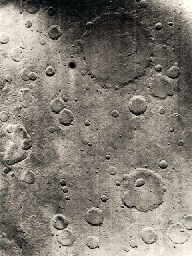This image shows some of the cratered terrain of Mars.
Click on image for full size
NASA
Martian Cratered Terrain
This is an example of the cratered surface of Mars. Almost the entire surface of Mars is covered with craters.
Craters can be wiped out over time, so a surface which has many craters is very old. The lowlands of Mars have fewer craters, and seem to be younger than the highlands of Mars, which have many craters and is a very old portion of Mars. The highlands of Mars are in the southern hemisphere, which means that the southern hemisphere is the oldest portion of Mars.
The Tharsis Ridge, where the volcanoes of Mars are found, is lightly cratered, which means that it is also a younger portion of Mars.
This cratering pattern provides evidence for the possibility of continental drift early in the history of Mars.
You might also be interested in:
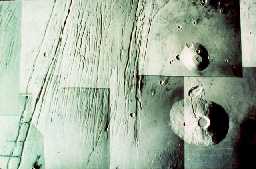
During its earliest history, Mars was bombarded with asteroid-like boulders leftover from the formation of Mars. The impacts of these boulders caused the surface of Mars to become warm enough for continents
...more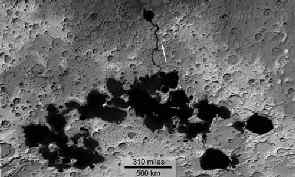
Scientists have found lakes and a river in the highlands of Mars. They don't contain any water, but they may show that the cold, dry planet once had a very different environment where liquid water flowed
...more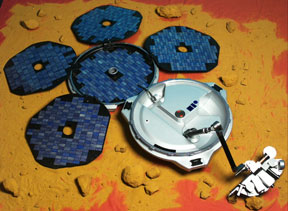
The European Space Agency (ESA) launched a mission to Mars called "Mars Express" in June of 2003. The Mars Express spacecraft has two parts: an orbiter that will circle the Red Planet for at least one
...more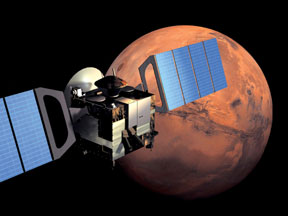
The European Space Agency (ESA) launched a mission to Mars called "Mars Express" in June of 2003. The Mars Express spacecraft has two parts: an orbiter that will circle the Red Planet for at least one
...more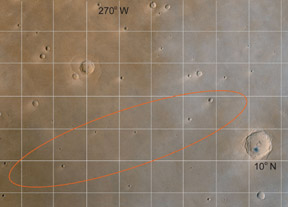
The European Space Agency (ESA) launched a mission to Mars called "Mars Express" in June of 2003. The Mars Express spacecraft has two parts: an orbiter that will circle the Red Planet for at least one
...more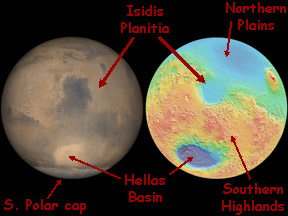
Isidis Planitia is a flat plain inside a very old crater on Mars. Isidis Planitia is about 1500 km (930 miles) across. It is just north of the equator on Mars on the eastern side of the Red Planet. The
...more
The unusual climate of Mars makes Mars not quite right for life as we know it on Earth. If the climate were warm enough, water would not freeze into the ground but vaporize into the atmosphere. Lots of
...more


